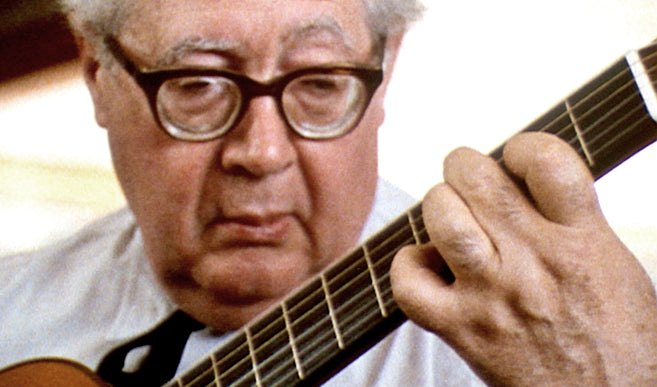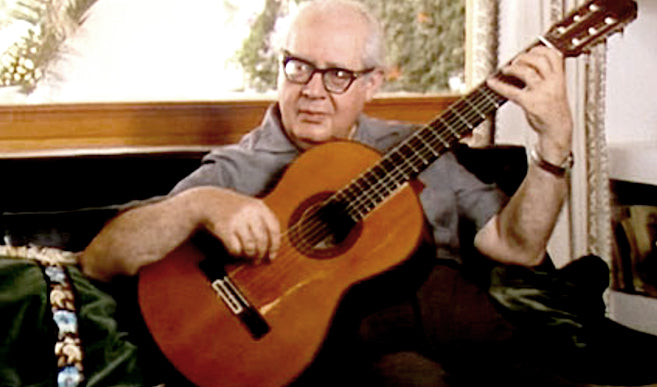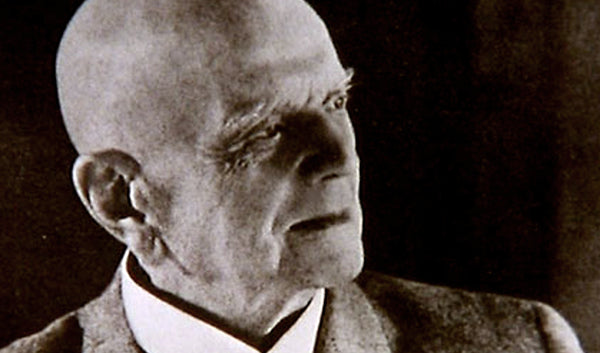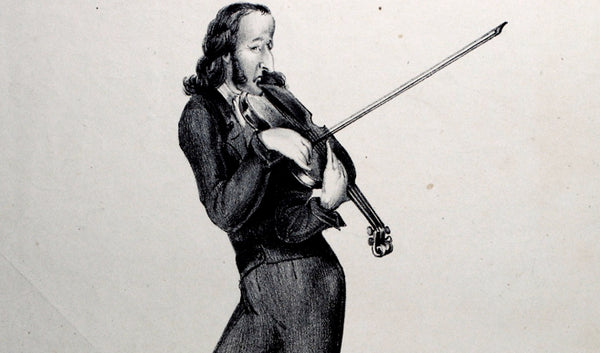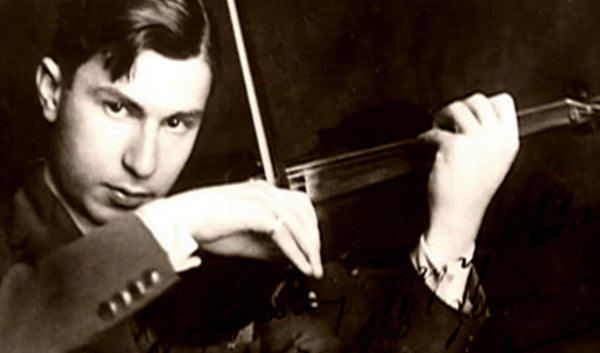This DVD is a celebration of one of the truly unique achievements in the history of Western music: the extraordinary quest of Andrés Segovia, the Andalusian par excellence, who, in his youth, fell in love with the melancholy voices of the Spanish guitar, taught himself the instrument, revolutionised the technique and succeeded in winning acceptance for it on the international concert platform, worldwide.
A programme which was as delightful and beautiful to look at as it was to listen to... it proved to be a blissful wedding of sight and sound.
Daily Telegraph
Andrés Segovia at Los Olivos
Fritz Kreisler once said that the two greatest performing musicians of the twentieth century were Pablo Casals and Andrés Segovia. He had two prime reasons, first, their extraordinary artistic spirits and, second, the fact that both elevated their chosen instrument to unprecedented levels on the international concert platform.
In Western classical music, the achievement of Andrés Segovia is unique. As a boy in Granada, he was captivated by the variety of tone colours and the wealth of harmonic possibilities of the Spanish guitar and he saw a future for it that nobody had previously even dreamed of. On those seemingly slender beginnings, he set out on a remarkable quest.
Playing the music written by Fernando Sor and Francisco Tarrega in the nineteenth century and adding the compositions of Johann Sebastian Bach, he began to build, not only a career for himself, but to lay the foundations of modern guitar technique and the present-day international popularity of the Spanish guitar as a serious musical instrument, an instrument capable of musical expression at the very highest level.
Within twenty years, Andrés Segovia had taught himself the instrument, revolutionised the technique and won acceptance for it on the concert platforms of Europe. He spent the next fifty years giving concerts in almost every part of the world and was at various times a resident of Spain, The United States, Switzerland and Argentina.
My life has been an ascending line, slowly, but ascending line. It came, everything came, but I was not to be distracted, not to answer another call. In that consists the miracle of my will, in persisting in the road I had taken. The rest was in the mysterious stars of my firmament.
Andrés Segovia
At the age of 75, he returned to his native Andalusia with his young wife, Emilita, to build a new home, Los Olivos, on the Costa del Sol as close as he could to Granada where he spent his childhood.
Segovia at Los Olivos is made in the relaxed atmosphere of his new home and in Jaen and Granada where he spent his formative years.
The idea is very simple: to give a great man an opportunity to look back on sixty years of concert life and one of the most astonishing contributions to Western music made by any performing musician in the last hundred years.
Andrés Segovia: The Song of the Guitar
Andrés Segovia had one of the longest and most distinguished careers in the history of Western music. He gave his first concert in Granada in 1909 at the age of 16 and his last in Miami 78 years later only a few weeks before he died, on the 2nd June 1987, at the age of 94.
His achievement is unique in the history of Western music, a fact acknowledged many years ago by Fritz Kreisler among others.
As an instrumentalist, Segovia did for the guitar what Casals did for the cello, but he did it with an instrument that had never before been taken seriously as a concert instrument. Within his own lifetime, Segovia taught himself the instrument, revolutionised the technique and elevated a folk instrument to the highest levels of the international concert platform. As a musician, he has come to be recognised as one of the most refined and profound of his time.
THE SONG OF THE GUITAR is a tribute to the maestro by Christopher Nupen, who knew him well for more than twenty-five years. It is shot in the Palaces of the Alhambra and in Granada, where Segovia spent his childhood and where, as he says in the film, he opened his eyes to beauty and the Lord put the seed of music in his soul. He often described the Alhambra as the Leitmotif of his life. And so the setting is as legitimate as it is glorious.
As a teenager, Segovia often played to his friends in the Alhambra until the early hours of the morning and he returned there regularly to perform at the Granada Festival.
The Alhambra is one of the architectural wonders of the world and its visual splendours formed an ideal setting in which to film the grand master playing works associated with his extraordinary career.
Between the pieces Segovia’s voice is heard, out of vision, recalling his childhood and the spirit in which he set out on his extraordinary quest.
DVD Extra features
- New personal introductions by Christopher Nupen
- New improved restored image quality
- Extensive 24-page booklet with photos
- Allegro Molto: an Allegro Films compilation
This DVD is a celebration of one of the truly unique achievements in the history of Western music: the extraordinary quest of Andrés Segovia, the Andalusian par excellence, who, in his youth, fell in love with the melancholy voices of the Spanish guitar, taught himself the instrument, revolutionised the technique and succeeded in winning acceptance for it on the international concert platform, worldwide.
A programme which was as delightful and beautiful to look at as it was to listen to... it proved to be a blissful wedding of sight and sound.
Daily Telegraph
Andrés Segovia at Los Olivos
Fritz Kreisler once said that the two greatest performing musicians of the twentieth century were Pablo Casals and Andrés Segovia. He had two prime reasons, first, their extraordinary artistic spirits and, second, the fact that both elevated their chosen instrument to unprecedented levels on the international concert platform.
In Western classical music, the achievement of Andrés Segovia is unique. As a boy in Granada, he was captivated by the variety of tone colours and the wealth of harmonic possibilities of the Spanish guitar and he saw a future for it that nobody had previously even dreamed of. On those seemingly slender beginnings, he set out on a remarkable quest.
Playing the music written by Fernando Sor and Francisco Tarrega in the nineteenth century and adding the compositions of Johann Sebastian Bach, he began to build, not only a career for himself, but to lay the foundations of modern guitar technique and the present-day international popularity of the Spanish guitar as a serious musical instrument, an instrument capable of musical expression at the very highest level.
Within twenty years, Andrés Segovia had taught himself the instrument, revolutionised the technique and won acceptance for it on the concert platforms of Europe. He spent the next fifty years giving concerts in almost every part of the world and was at various times a resident of Spain, The United States, Switzerland and Argentina.
My life has been an ascending line, slowly, but ascending line. It came, everything came, but I was not to be distracted, not to answer another call. In that consists the miracle of my will, in persisting in the road I had taken. The rest was in the mysterious stars of my firmament.
Andrés Segovia
At the age of 75, he returned to his native Andalusia with his young wife, Emilita, to build a new home, Los Olivos, on the Costa del Sol as close as he could to Granada where he spent his childhood.
Segovia at Los Olivos is made in the relaxed atmosphere of his new home and in Jaen and Granada where he spent his formative years.
The idea is very simple: to give a great man an opportunity to look back on sixty years of concert life and one of the most astonishing contributions to Western music made by any performing musician in the last hundred years.
Andrés Segovia: The Song of the Guitar
Andrés Segovia had one of the longest and most distinguished careers in the history of Western music. He gave his first concert in Granada in 1909 at the age of 16 and his last in Miami 78 years later only a few weeks before he died, on the 2nd June 1987, at the age of 94.
His achievement is unique in the history of Western music, a fact acknowledged many years ago by Fritz Kreisler among others.
As an instrumentalist, Segovia did for the guitar what Casals did for the cello, but he did it with an instrument that had never before been taken seriously as a concert instrument. Within his own lifetime, Segovia taught himself the instrument, revolutionised the technique and elevated a folk instrument to the highest levels of the international concert platform. As a musician, he has come to be recognised as one of the most refined and profound of his time.
THE SONG OF THE GUITAR is a tribute to the maestro by Christopher Nupen, who knew him well for more than twenty-five years. It is shot in the Palaces of the Alhambra and in Granada, where Segovia spent his childhood and where, as he says in the film, he opened his eyes to beauty and the Lord put the seed of music in his soul. He often described the Alhambra as the Leitmotif of his life. And so the setting is as legitimate as it is glorious.
As a teenager, Segovia often played to his friends in the Alhambra until the early hours of the morning and he returned there regularly to perform at the Granada Festival.
The Alhambra is one of the architectural wonders of the world and its visual splendours formed an ideal setting in which to film the grand master playing works associated with his extraordinary career.
Between the pieces Segovia’s voice is heard, out of vision, recalling his childhood and the spirit in which he set out on his extraordinary quest.
DVD Extra features
- New personal introductions by Christopher Nupen
- New improved restored image quality
- Extensive 24-page booklet with photos
- Allegro Molto: an Allegro Films compilation


